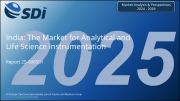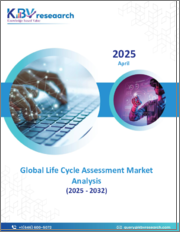
|
시장보고서
상품코드
1522213
분석 기기 및 생명과학 기기 서비스 시장(2024년)The 2024 Analytical & Life Science Instrumentation Service Market |
||||||
분석 기기나 생명과학 기기 서비스는 기기의 성능을 유지하고 고가의 실험실 자산의 수명을 최대한 연장하는 데 필수적입니다. 서비스 시장에는 원래 장비 제조업체가 제공하든 타사 서비스 프로바이더가 제공하든 모든 서비스 계약과 서비스 중 장착된 교체 부품이 포함됩니다. 소프트웨어 지원 및 검증 서비스와 같은 다른 서비스도 포함됩니다. 단, 사내 서비스의 가치는 분석에서 제외되었습니다.
중국의 경제 문제와 북미와 유럽의 신중한 소비에도 불구하고 기존 분석 장비에 대한 서비스 수요는 일정하게 유지되고 있습니다. 이러한 분석 장비는 다양한 산업의 품질관리, 품질 보증, 분석 서비스 출시 테스트, 응용 연구개발 및 기초 연구에서 필수적인 역할을 수행합니다. 정기적 인 예방 정비 및 적시 수리는 서비스 산업의 중요한 원동력이며 장비 구매 및 관련 서비스 계약의 감소를 상쇄하는 데 도움이 되었습니다.
팬데믹 기간 중 원격 지원, 라이브 채팅, 화상 회의, 데스크톱 공유와 같은 새로운 기능이 주목을 받았습니다. 세대 교체, 장비 다운타임 증가, 비용 상승과 함께 이러한 기능들은 이제 고객의 요구를 더욱 효과적으로 충족시키고 있습니다. 또한 인공지능이 계속 발전함에 따라 사용자와 공급업체 모두 장비의 다운타임과 비용을 더욱 줄일 수 있는 지능형 기능을 구현해야 할 필요성이 커지고 있습니다. 도입의 성공 여부는 아직 알 수 없지만, 서비스 비용을 낮추고, 응답 시간을 개선하고, 장비 가동 중지 시간을 줄이고, 장비 수명을 연장하는 아이디어를 고객이 받아들이고 있다는 것은 분명합니다.
세계의 분석 기기·생명과학 기기 서비스 시장에 대해 조사했으며, 시장의 개요 함께 분석 기기 업계의 10기술 부문 시장 정보, 각 기술의 경쟁 구도 등을 정리하여 전해드립니다.
목차
제1장 서론
제2장 기술 개요
- 개요
- 크로마토그래피
- 질량분석
- 원자 분광법
- 분자 분광법
- 생명과학 기기
- 표면 과학
- 재료 특성 평가
- 실험실 자동화와 인포매틱스
- 샘플 조제 기술
- 실험장비
제3장 시장의 수요
- 전체
- 기술별 종합적 서비스 수요, 2023-2028년
- 서비스 유형별 총서비스 수요, 2023-2028년
- 부문별 서비스 수요 전체, 2023-2028년
- 기능별 서비스 수요 전체, 2023년
- 지역별 전체적인 서비스 수요, 2023-2028년
- 종합 서비스 벤더 점유율, 2023년
- 서비스 공급업체 참여 상황, 2023년
- 크로마토그래피
- 질량분석
- 원자 분광법
- 분자 분광법
- 생명과학 기기
- 표면 과학
- 재료 특성 평가
- 실험실 자동화와 인포매틱스
- 샘플 조제 기술
- 실험장비
제4장 최종사용자 시점
- 인구통계와 사용 상황
- 크로마토그래피/MS
- 분광법
- 생명과학 기기
- 현미경검사/재료 특성 평가
- 기타 실험장비/자동화
- 연구실 예산과 구입
- 공급업체
- 동향
제5장 부록
KSA 24.08.06The servicing of analytical and life science instrumentation is vital to maintaining instrument performance capabilities and maximize the life of costly lab assets. Whether provided by the original instrument manufacturer or by a third party service provider, the service market includes all service contracts and any replacement parts installed during servicing. Other services like software support and validation service are also included. However, the value of in-house service is excluded from our analysis.
Despite economic challenges in China and cautious consumer spending in North America and Europe, the demand for servicing existing analytical instruments remains constant. These instruments play essential roles in quality control, quality assurance, analytical service release testing, applied R&D, and basic research across various industries. Routine preventive maintenance and timely repairs are critical drivers in the service industry, helping offset declines in instrument purchases and associated service contracts.
During the pandemic, new features such as remote support, live chat, video conferencing, and desktop sharing gained prominence. Coupled with a generational shift, increased instrument downtime, and rising costs, these features now address customer needs more effectively. Further as artificial intelligence continues to advance, there is a growing need to implement intelligent features that further reduce instrument downtime and costs for both users and vendors. While the successful implementation remains to be seen, it's evident that customers are receptive to ideas that lower service costs, improve response times, reduce instrument downtimes, and extend the life of their instruments.
"The 2024 Analytical & Life Science Instrumentation Service Market" provides valuable market information and insights for the service market within ten technology segments of the analytical instrument industry. This brief is organized to provide a snapshot of current and future service demand, which is segmented by technology, service type, sector, function, and region. It also explores the competitive landscape of the service market or each technology, including a list of the top vendors and their market share positions. To supplement this data, this publication also analyzes the results of an end-user survey of 264 laboratory personnel, located across regional end markets, who are involved in instrument service spending and allocation. The survey results also provides insights into how instrument usage, service coverage and frequency, budgets, other macroeconomic factors come into play and form service market trends.
Report Overview:
Analytical and life science instrumentation technologies covered in this report include:
- 1. Chromatography
- 2. Mass Spectrometry
- 3. Atomic Spectroscopy
- 4. Molecular Spectroscopy
- 5. Life Science Instrumentation
- 6. Surface Science
- 7. Materials Characterization
- 8. Lab Automation & Informatics
- 9. Sample Preparation Techniques
- 10. Lab Equipment
The breakdown and definition of service coverages, which are segmented into the following service type:
- 1. Initial Warranty & Installation
- 2. Extended Warranty & Service Contracts
- 3. Maintenance & Calibration
- 4. Non-Warranty Instrument Service/Repair
- 5. Lab and Personnel Support
Market demand segmented by technique, service type, sector, region, and function, along with market forecast for the next five years.
Vendors share of participating service provider in each technology category in the global market. Some of the top vendors in the overall service market are presented below:
|
|
End user perspective from 264 respondents around the world revealing various trends in the analytical and life science instrumentation service market.
Table of Contents
1. Introduction
- A. About this Report
- B. Methodology
- C. Regional Segmentations
- D. End Market & Sector Segmentations
- E. Function Segmentation
- F. Service Segmentations
- G. Executive Summary
2. Technology Overview
- A. Overview
- B. Chromatography
- C. Mass Spectrometry
- D. Atomic Spectroscopy
- E. Molecular Spectroscopy
- F. Life Science Instrumentation
- G. Surface Science
- H. Materials Characterization
- I. Lab Automation & Informatics
- J. Sample Preparation Techniques
- K. Lab Equipment
3. Market Demand
- A. Overall
- Overall Service Demand by Technology, 2023-2028
- Overall Service Demand by Service Type, 2023-2028
- Overall Service Demand by Sector, 2023-2028
- Overall Service Demand by Function, 2023
- Overall Service Demand By Region, 2023-2028
- Overall Service Vendor Share, 2023
- Overall Service Supplier Participation, 2023
- B. Chromatography
- Chromatography Service Demand by Technique, 2023-2028
- Chromatography Service Demand by Service Type, 2023-2028
- Chromatography Service Demand by Sector, 2023-2028
- Chromatography Service Demand by Function, 2023
- Chromatography Service Demand By Region, 2023-2028
- Chromatography Service Vendor Share, 2023
- Chromatography Service Supplier Participation, 2023
- C. Mass Spectrometry
- Mass Spectrometry Service Demand by Technique, 2023-2028
- Mass Spectrometry Service Demand by Service Type, 2023-2028
- Mass Spectrometry Service Demand by Sector, 2023-2028
- Mass Spectrometry Service Demand by Function, 2023
- Mass Spectrometry Service Demand By Region, 2023-2028
- Mass Spectrometry Service Vendor Share, 2023
- Mass Spectrometry Service Supplier Participation, 2023
- D. Atomic Spectroscopy
- Atomic Spectroscopy Service Demand by Technique, 2023-2028
- Atomic Spectroscopy Service Demand by Service Type, 2023-2028
- Atomic Spectroscopy Service Demand by Sector, 2023-2028
- Atomic Spectroscopy Service Demand by Function, 2023
- Atomic Spectroscopy Service Demand By Region, 2023-2028
- Atomic Spectroscopy Service Vendor Share, 2023
- Atomic Spectroscopy Service Supplier Participation, 2023
- E. Molecular Spectroscopy
- Molecular Spectroscopy Service Demand by Technique, 2023-2028
- Molecular Spectroscopy Service Demand by Service Type, 2023-2028
- Molecular Spectroscopy Service Demand by Sector, 2023-2028
- Molecular Spectroscopy Service Demand by Function, 2023
- Molecular Spectroscopy Service Demand By Region, 2023-2028
- Molecular Spectroscopy Service Vendor Share, 2023
- Molecular Spectroscopy Service Supplier Participation, 2028
- F. Life Science Instrumentation
- Life Science Instrumentation Service Demand by Technique, 2023-2028
- Life Science Instrumentation Service Demand by Service Type, 2023-2028
- Life Science Instrumentation Service Demand by Sector, 2023-2028
- Life Science Instrumentation Service Demand by Function, 2023
- Life Science Instrumentation Service Demand By Region, 2023-2028
- Life Science Instrumentation Service Vendor Share, 2023
- Life Science Instrumentation Service Supplier Participation, 2023
- G. Surface Science
- Surface Science Service Demand by Technique, 2023-2028
- Surface Science Service Demand by Service Type, 2023-2028
- Surface Science Service Demand by Sector, 2023-2028
- Surface Science Service Demand by Function, 2023
- Surface Science Service Demand By Region, 2023-2028
- Surface Science Service Vendor Share, 2023
- Surface Science Service Supplier Participation, 2023
- H. Materials Characterization
- Materials Characterization Service Demand by Technique, 2023-2028
- Materials Characterization Service Demand by Service Type, 2023-2028
- Materials Characterization Service Demand by Sector, 2023-2028
- Materials Characterization Service Demand by Function, 2023
- Materials Characterization Service Demand By Region, 2023-2028
- Materials Characterization Service Vendor Share, 2023
- Materials Characterization Service Supplier Participation, 2023
- I. Lab Automation & Informatics
- Lab Automation & Informatics Service Demand by Technique, 2023-2028
- Lab Automation & Informatics Service Demand by Service Type, 2023-2028
- Lab Automation & Informatics Service Demand by Sector, 2023-2028
- Lab Automation & Informatics Service Demand by Function, 2023
- Lab Automation & Informatics Service Demand By Region, 2023-2028
- Lab Automation & Informatics Service Vendor Share, 2023
- Lab Automation & Informatics Service Supplier Participation, 2023
- J. Sample Preparation Techniques
- Sample Preparation Techniques Service Demand by Technique, 2023-2028
- Sample Preparation Techniques Service Demand by Service Type, 2023-2028
- Sample Preparation Techniques Service Demand by Sector, 2023-2028
- Sample Preparation Techniques Service Demand by Function, 2023
- Sample Preparation Techniques Service Demand By Region, 2023-2028
- Sample Preparation Techniques Service Vendor Share, 2023
- Sample Preparation Techniques Service Supplier Participation, 2023
- K. Lab Equipment
- Lab Equipment Service Demand by Technique, 2023-2028
- Lab Equipment Service Demand by Service Type, 2023-2028
- Lab Equipment Service Demand by Sector, 2023-2028
- Lab Equipment Service Demand by Function, 2023
- Lab Equipment Service Demand By Region, 2023-2028
- Lab Equipment Service Vendor Share, 2023
- Lab Equipment Service Supplier Participation, 2023
4. End User Perspective
- A. Demographics & Usage
- B. Chromatography/MS
- C. Spectroscopy
- D. Life Science Instrumentation
- E. Microscopy/Materials Characterization
- F. Other Lab Equipment/Automation
- G. Lab Budget and Purchases
- F. Suppliers
- G. Trends
5. Appendix
- A. Survey Questionnaire


















